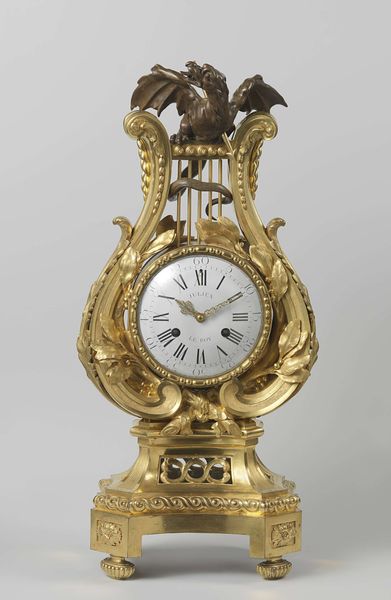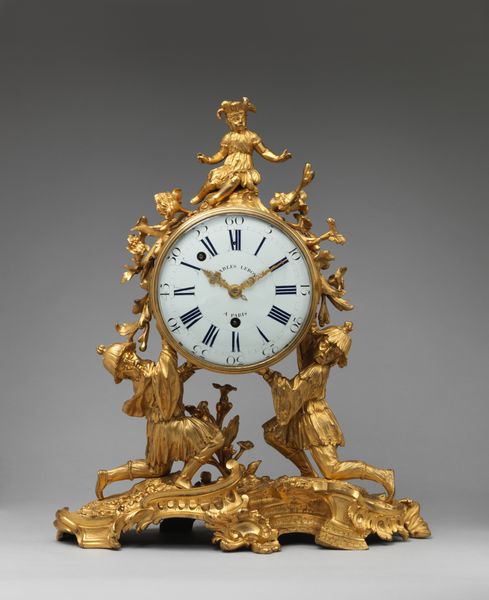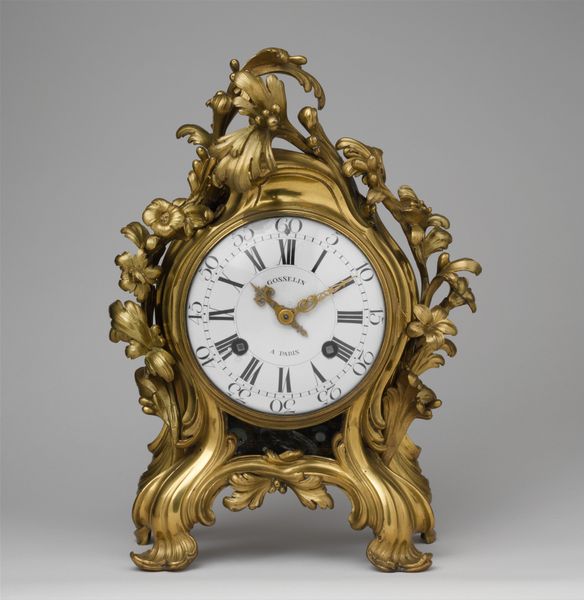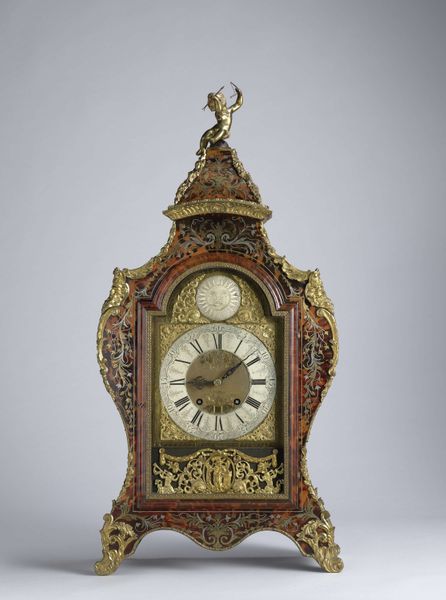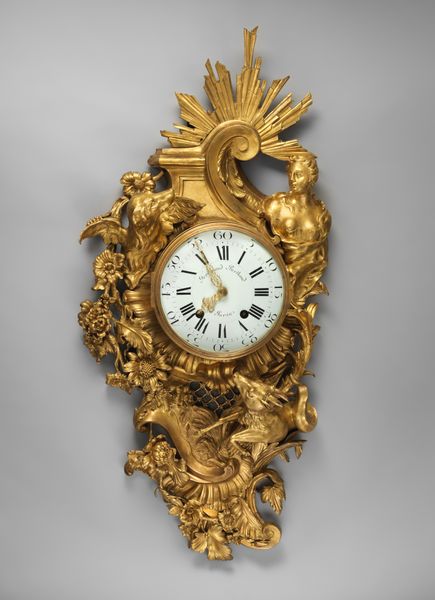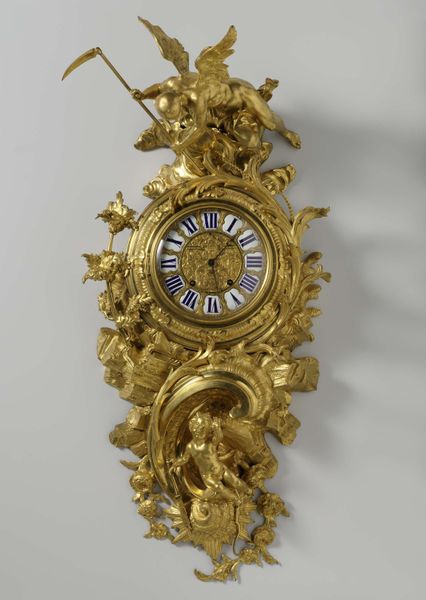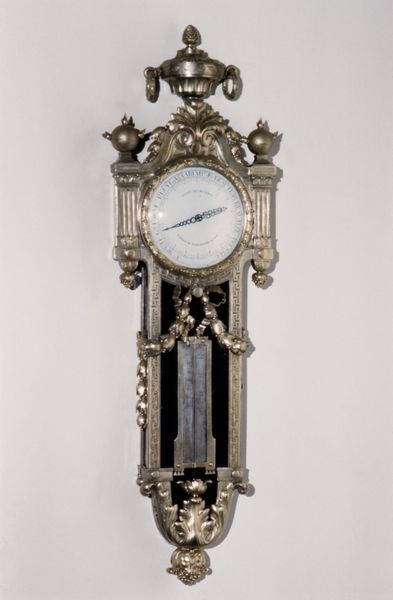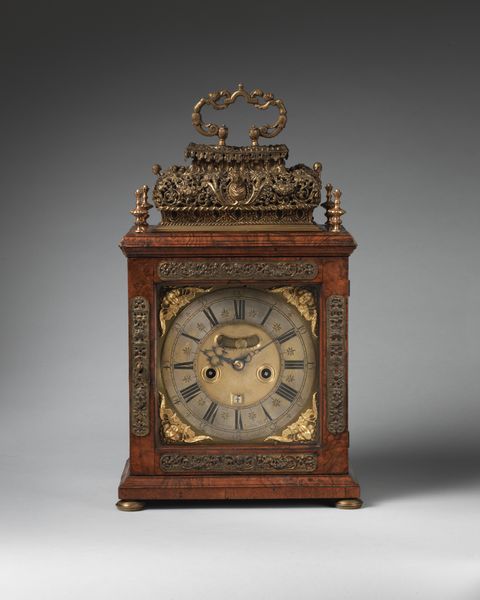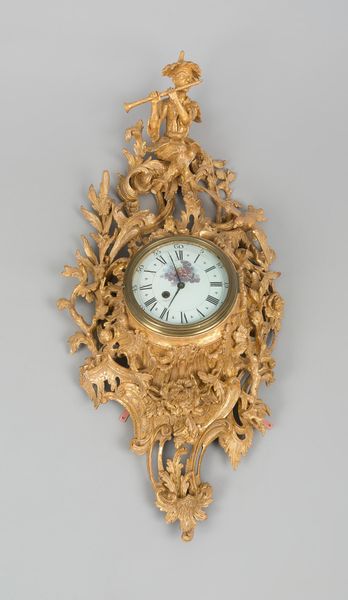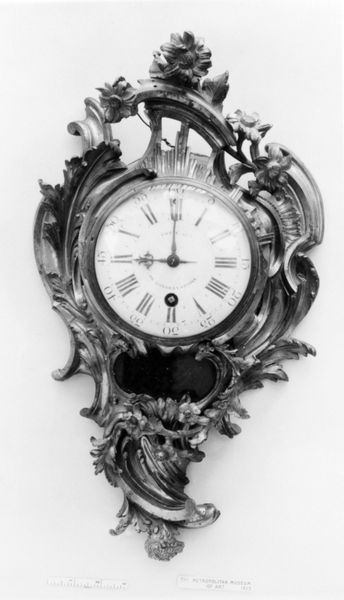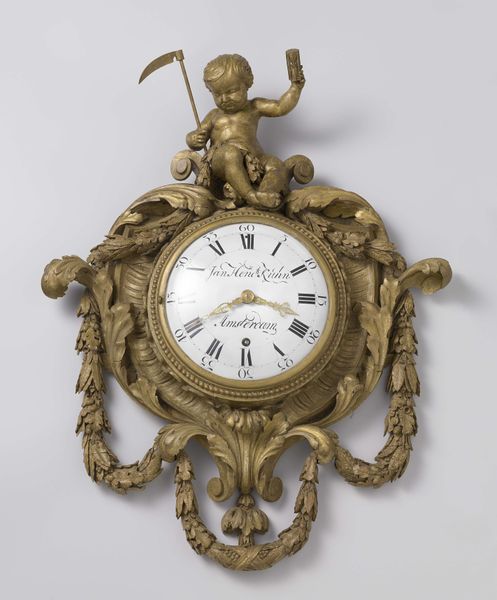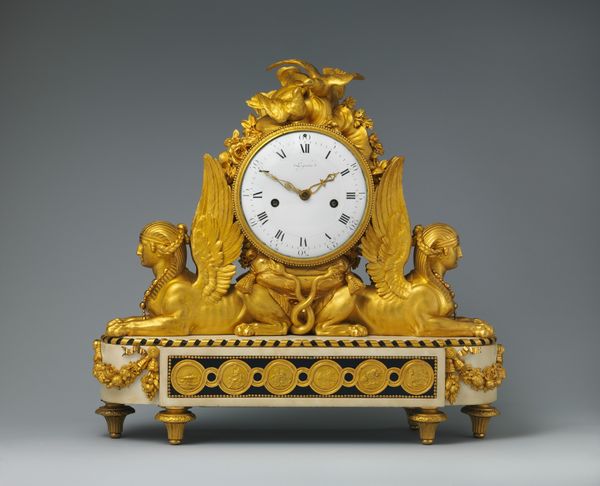
Musical mantel clock (Pendule avec boîte à musique) 1765 - 1775
0:00
0:00
Dimensions: H. 30-1/8 x W. 23-3/8 x D. 10-1/2 in. (76.5 x 59.4 x 26.7 cm)
Copyright: Public Domain
Editor: Here we have a Musical Mantel Clock created between 1765 and 1775 by Jean Baptiste Martre. It's a striking assemblage of metal, really ornate. I’m initially struck by how extravagant it seems. What social statements do you see embedded in this clock, and its creation during that period? Curator: Well, clocks themselves were statements of wealth and precision in the 18th century. But a musical clock? That elevates it to a potent symbol of aristocratic luxury. This wasn't just about telling time; it was about demonstrating the owner's refined taste and financial power. Think about the socio-economic climate of the time. What does creating such an object signal? Editor: It feels almost… defiant? Knowing that a musical clock required a ton of time, money, and skill, during times of potential upheaval. Curator: Exactly! Its elaborate decoration, reflective of Rococo style with all that asymmetrical design, was a direct assertion of the patron’s status. These types of items are very closely linked to the patron that commissioned the artwork. Do you think it was only to their taste? Editor: Probably also projecting the patron's image of themselves for other elites, or whoever came to their place? Curator: Precisely. It speaks volumes about the performative aspect of wealth during the period. A lot of Rococo art serves to mask reality, which is very clever. What I find truly interesting is the way such objects were displayed. Do you have any insight to share on this? Editor: This wasn’t tucked away. This would be the center of attention. The sound, visual, the metal and sculpture. Thank you for clarifying, this helped solidify it! Curator: Glad I could add to the context!
Comments
No comments
Be the first to comment and join the conversation on the ultimate creative platform.
